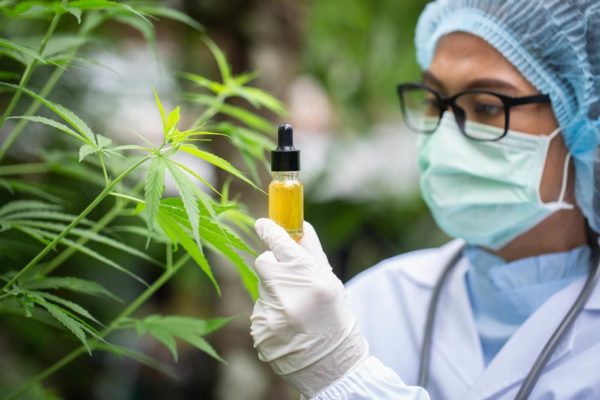Cannabidiol (CBD): Meet a Medicinal Molecule
The cannabis plant produces over 80 therapeutically active chemical compounds, called “cannabinoids.” In recent years, one of them, cannabidiol (CBD) has gained scientific and now public attention, for its wealth of therapeutic properties.
Cannabidiol, or CBD, swept into the public eye with Dr. Sanjay Gupta’s 2013 documentary “Weed,” in which he introduced the general public to CBD via the story of Charlotte Figi, a young patient with a particularly devastating form of epilepsy called Dravet syndrome. The traditional treatments for Dravet failed her, and she was experiencing 300 grand mal seizures a week. Charlotte’s parents began her on a course of cannabis oil rich in CBD. After the first dose, Charlotte’s seizures stopped for a full seven days. She continues to thrive using the oil, and a high-CBD cannabis varietal, Charlotte’s Web, was named in her honor.
In the following two years, 16 states approved the use (if not the production and sale) of “CBD-only” cannabis oil preparations. These include states like Missouri, Oklahoma, and even Texas, which have traditionally been staunchly opposed even to the medical use of cannabis.
What the Science Says
On Sept. 1 2016, a search for the single word “cannabidiol” on PubMed, the U.S. National Library of Medicine operated by the National Institutes of Health, returned 1,559 results. Over 100 of these have been published in 2016 alone.
CBD has demonstrated neuroprotective, antioxidant, anti-tumor and anti-inflammatory properties, as well as reducing the proliferation of proteins associated with Alzheimer’s, and showing promise for treating depression, anxiety, Post-Traumatic Stress, and more. This includes studies done both in vitro and in vivo (in vitro = in the test tube or petri dish; in vivo = in mammals, usually mice, monkeys or humans). CBD is also known to modulate the psychoactive effects of THC.
In a study published in the August 2016 issue of the Journal of Alzheimer’s Disease, CBD worked with THC to reduce memory impairment and protein deposits in early stage Alzheimer’s disease in mice. Yet another studyindicated that CBD had anti-tumor efficacy in neuroblastoma, which is among the most common of childhood cancers.
Mouse models also indicate that CBD may be a safe and effective anti-anxiety and anti-depression agent. CBD is also being investigated as a potential antipsychotic treatment. CBD reportedly interacts with the dopamine and serotonin receptors and in a recently published study, it modulated “fear memory formation” in mice, which has significant implications for the treatment of Post-Traumatic Stress.
Pharmaceutical companies are exploring CBD-based medicines, using both natural CBD extracted from the plant and synthetic or lab-created CBD-like molecules, including Epidiolex©, which is currently undergoing human clinical Phase III trials in the U.S.
Where Can I Get CBD?
In medical cannabis states, most dispensaries and providers now offer CBD-rich formulations. Many of these preparations also contain some level of THC, since the two compounds work together synergistically. These products are made from the resinous glands of female cannabis plants.
Some companies are promoting high-CBD products derived from industrial hemp. These products are made using the less-resinous, extremely low-THC hemp plant. These products are not FDA-approved and are not legal in all 50 states. The FDA has found that many of them contain little to no CBD, and in 2015 and 2016 the agency sent out two rounds of warning letters to some of these companies.
For More Information
Dr. Gupta’s special is a great place to learn more about this therapeutic molecule. Also, check out the CBD User’s Manual produced by Project CBD.





